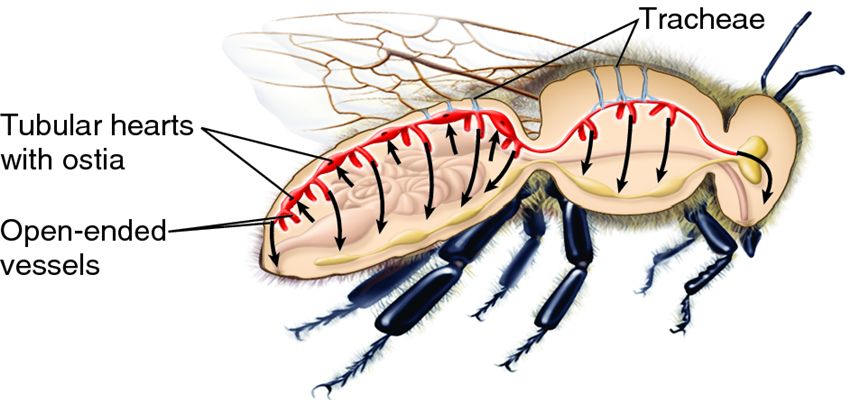biological view of bees and bee systems

Contents
Digestive bee system
Bees’ mouth is where their digestive process starts, and their rectum is where it ends.
The tongue of honey bees is designed for licking and sucking.
The proboscis is made up of the mandible and lower lip.
While worker bees’ suprapharyngeal glands secrete royal jelly when they are young, they also secrete enzymes that aid in the breakdown of sucrose during the production of honey as they get older.
The honey stomach, where honey is kept, is the structure where it enters the belly following the esophagus in the chest. The foregut, primary stomach, intestine, and rectum follow.
Bees never leave their waste in the colony unless they are ill.
The circulatory bee system

Blood circulates freely throughout the circulatory bee system. Blood, also known as hemolymph, fills the body cavity. Carbon dioxide and oxygen are not carried by the blood. They transport hormones, enzymes, and digested nutrients.
Nervous bee system

Bees have a brain and seven nerve centers that make up nervous bee system. Only the head-related organ is the brain. Nerve nodes found in the relevant areas of the body assist other parts of the body in their actions.
The respiratory bee system
In bees with tracheal respiration, the clean air is conveyed into the tissues and the contaminated air is discharged through a total of 10 pairs of pores, 3 pairs in the thorax and 7 pairs in the abdomen.
Hormones and Pheromones
Activation Hormone
This hormone, which is produced by the secretory cells on either side of the brain, guarantees that the larval stage changes its coat and that the pupal stage develops. It also serves the purpose of preventing worker bee ovaries from developing.
Shirt Changing Hormone
This hormone, which is released by glands in the front chest, has a positive impact on the bee’s growth, skin changes, and metamorphosis.
Juvenile Hormone
A pair of glands that have a role in the development of larvae are found towards the rear of the brain. Worker bee larvae are longer than queen bee larvae.
permits it to mature and develop over time. Additionally, bees play a part in the division of labor in the hive where they perform their responsibilities.
Queen Bee Pheromones
Secreted by glands and located in the queen bee’s jaw. It is good at luring drones during mating. It has an impact on how worker bees get together during swarming.
the breeding of queen bees is hampered by exerting pressure on them to lay their eggs and their new.
Alarm pheromone
Secreted by worker bees from their mouths and stingers. Because they spread the sting virus, worker bees are enormous. attacks on this idea. releasing a pheromone of alarm The worker bee elevates its abdomen at a about 45-degree angle. It raises it to reveal the needle area and spreads its wings.
General Characteristics of Colony Individuals
The colony’s whole population is made up of 1.5 mm long eggs.
2 complex eyes and 3 simple eyes are the eyes of all bees.
Three pairs of legs and two pairs of wings make up a bee.
The head, torso, and abdomen make up the bee’s body.
The thorax contains all of the wings and legs.
The drone’s abdomen has seven movable rings, while the queen and worker bees only have six. The last ring in the queen and worker bees differentiates to form the sting chamber, which accounts for their lack of one ring.
More than 5,000 sensory receptors make up its antennae, which also function as smell organs.
They can detect the temperature, wind speed, and honey from a distance of two kilometers.







